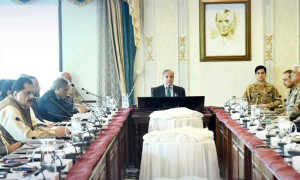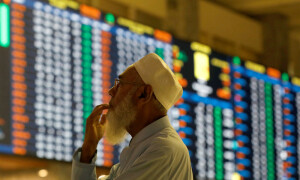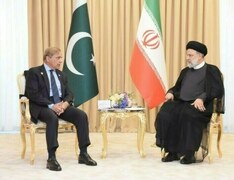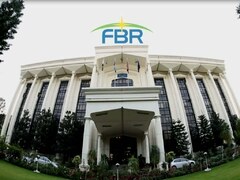We now carry out an appraisal of the measures in the budget, starting with the enumeration of the key initiatives proposed to push the economy onto a higher growth path followed by an assessment of the taxation proposals. In view of the potentially large resource gap we then put forward proposals for generating more revenues and economizing on expenditure.
With the short-term in mind, seemingly throwing caution to the winds, a slew of bold moves has been made to stimulate growth and reduce the cost of conducting economic transactions. Gifts in the form of tax breaks, reliefs and concessions have been handed out to effectively all categories of businesses-manufacturing and financial and telecommunication services.
The policy measures and instruments adopted to ease the cost of doing business are:
(i) The corrective measures taken to remove some of the main distortions, errors and aberrations in the tax laws, for example, exports of services to now pay the same rate, 1%, as exports of goods.
(ii) Raising of the minimum sales for the turnover tax to Rs 10 million from Rs 3 million, with the tax to be the higher of 0.25% of Turnover (greater than Rs.100 million) or 7.5% of Income in the case of SMEs and the reduction in the rate of the Turnover Tax to 1.25% for the large- scale sector.
(iii) A reduction in the rates of customs duties, additional customs duties, and regulatory duties on 3,020 tariff lines.
(iv) Beginnings of the reduction in the number of withholding taxes starting with the withdrawal of 12 withholding taxes. The main ones are related to banking transactions, foreign transactions on credit cards and margin financing.
(v) A reduction in the capital gains tax to 12.5% from 15% on trade in equities. This measure has more value for optics since the loss of revenue will be modest (the present collection is less than Rs 10 billion).
An important stated intention is for a shift to a more relaxed tax environment, through a reduction in the number of taxes and the restoration of the self-assessment scheme. The consequential reduction in the cost of compliance- which has been suffocating economic activity-should boost investor confidence and sentiment, leading, hopefully to a general improvement in the business climate resulting in higher buoyancy of the manufacturing sector following the augmentation of production capacities. However, the outcome will depend on how this intention will get implemented. In our opinion, the prospect for a jump in private investment has been greatly diminished by the regressive withdrawal of the tax-deductible initial depreciation allowance and the tax credit for BMR for investment in plant and machinery. And the government itself appears not to be fully convinced that (without these investment related adjustments) the other incentives will be enough to induce a significant improvement in the level of private investment. It expects private investment to increase by a mere 0.2% of GDP (less than even a possible statistical error).
Also, the taxation proposals in the budget are heavily tilted towards indirect taxes. The targeted growth rate in the sales tax is as high as 30 percent, while it is 22 percent, in the case of income tax. Exemptions have been withdrawn and the existing rate increased to the standard rate of 17 percent on various items in the different Schedules of the Sales tax Act. In some cases, the move has been regressive in nature.
Big moves have been made in the case of crude oil, which was hitherto exempt and will now be subject to the 17 percent sales tax. The tax rate on RLNG has been raised to 17 percent from 12 percent currently. However, the net revenues from these proposals will be marginal as the input tax invoicing at the next stage of value added will lead to a reversion of the revenues. The 2.5 percent customs duty on crude oil will add to the retail price of petroleum products at a time when there will already be a big pressure on these prices due to the big enhancement in the petroleum levy.
Another taxation proposal of the taxation of sugar on the retail price is very regressive in nature like the excise duty on telecommunications and should be withdrawn. The alternative is to introduce retail price taxation in the case of luxury consumer durables.
The proposal to levy a withholding tax on electricity bills above Rs 25,000 of domestic consumers who are not income taxpayers is an appropriate move. This policy should also be applied on commercial consumers with bills above Rs 10,000.
A good move is to broaden the definition of income, subject to the personal income tax by the inclusion of interest and rental income and capital gains from property.
There had been indications that the Government was going to rationalize the personal income tax system by reducing the number of slabs from 11 to 5 or 6. This has not happened. The time has come for raising the exemption limit from Rs 600,000 to Rs 900,000 in view of the rise in the cost of living of the middle class. Also, the maximum rate should be reduced to 30 percent and made applicable on income much lower than Rs 75 million currently.
Turning to the scope for resource mobilization, according to one study, in the case of Pakistan, the estimated annual loss due to tax breaks, as a share of tax revenue collection, is 22%, partly owing to a host of income tax, sales tax and customs duty exemptions or concessions/reduced tax rates (referred to as “Tax Expenditures”), remaining largely unaddressed in this budget, they are costing Rs 1.3 trillion a year (having risen by 14% over last year), a major factor underlying the continuing low tax-to-GDP ratio.
Some of these exemptions stem from bilateral and preferential trade agreements, CPEC-related privileges and those granted to IPPs under individual contractual commitments. These, until the terms can be changed or the expiry date reflected under the agreements has been reached, cannot be altered. Other concessions (euphemistically referred to as incentives) have been granted to some sectors (like construction, automobiles and oil and gas) and specific industries and holders of specific positions. These exemptions should be withdrawn gradually.
In our opinion, a much neglected, but important side of the fiscal equation, are the level of expenditures, on which the budget is virtually silent. Some of the key areas, which in our opinion require attention are mentioned below.
The cost of the fertilizer subsidy should be picked up by the provinces, since they hardly collect much by way of agriculture income tax. Similarly, they should be financing the vertical programmes, like the Lady Health Workers.
Next is the case of universities. Presently, the policy incentivizes the provinces to approve new universities with HEC financing their running and future expansion costs. This support should be phased out gradually. And to begin with the sharing between the two should be converted to a 50:50 arrangement.
Again, the Federal government should not initiate new intra-provincial development projects and focus only on trunk infrastructure. The former schemes should be the responsibility of the respective Provincial Government.
After the passage of the 18th Amendment there are still 40 Divisions and 400 attached departments, with 650,000 employees, and autonomous organisations, with 520,000 employees, at the Federal level.
In view of the redundancy of the purposes or uses for which they were initially established many of them, especially in the categories of attached departments and autonomous organizations, need to be wound up and not restructured or merged as is being suggested in official circles; including those identified for eventual privatization because it may involve the creation of private entities with indefensible entitlements (an example is that of two power projects in the Punjab) and monopolistic powers. And employees who have completed 25 years of service should be considered for retirement with their pension entitlement protected. Even if, politically, it would not be possible to ease them out, they should be asked to stay at home, thereby saving outflows on account of rent, utilities, cars, and their maintenance. Furthermore, all these posts, including vacant posts in other institutions, should be surrendered, with bans on new recruitment. The pension liabilities having acquired gargantuan proportions the entitlements of the scheme require an urgent review for a fundamental restructuring and saving in costs.
Our analysis highlights the lingering doubts on the feasibility of the proposed tax cuts, the 10% salary increase over and above the 25% ad hoc allowance increase already granted in March 2021, a universal fully funded health card, cash handouts in the form of cash transfers under Ehsaas and generous interest free loans somehow being able to pay for themselves.
Hence, in the end the question remains, will we able to strike our own course and manage without the IMF, by ignoring its suggested reforms, because it is not that obvious how this feel-good bonanza will be financed?
(The authors are a former Federal Minister and a former Governor of the SBP, respectively. This was the second and last part of a two-part series of articles)
Copyright Business Recorder, 2021
The writer is Professor Emeritus at BNU and former Federal Minister


























Comments
Comments are closed.